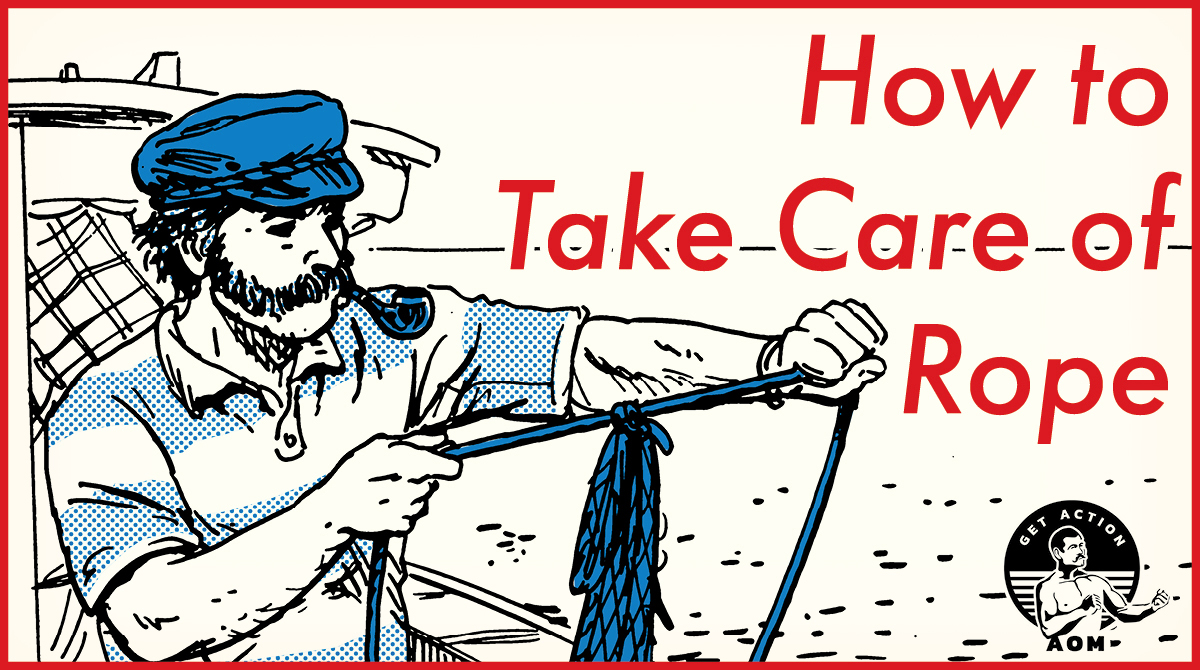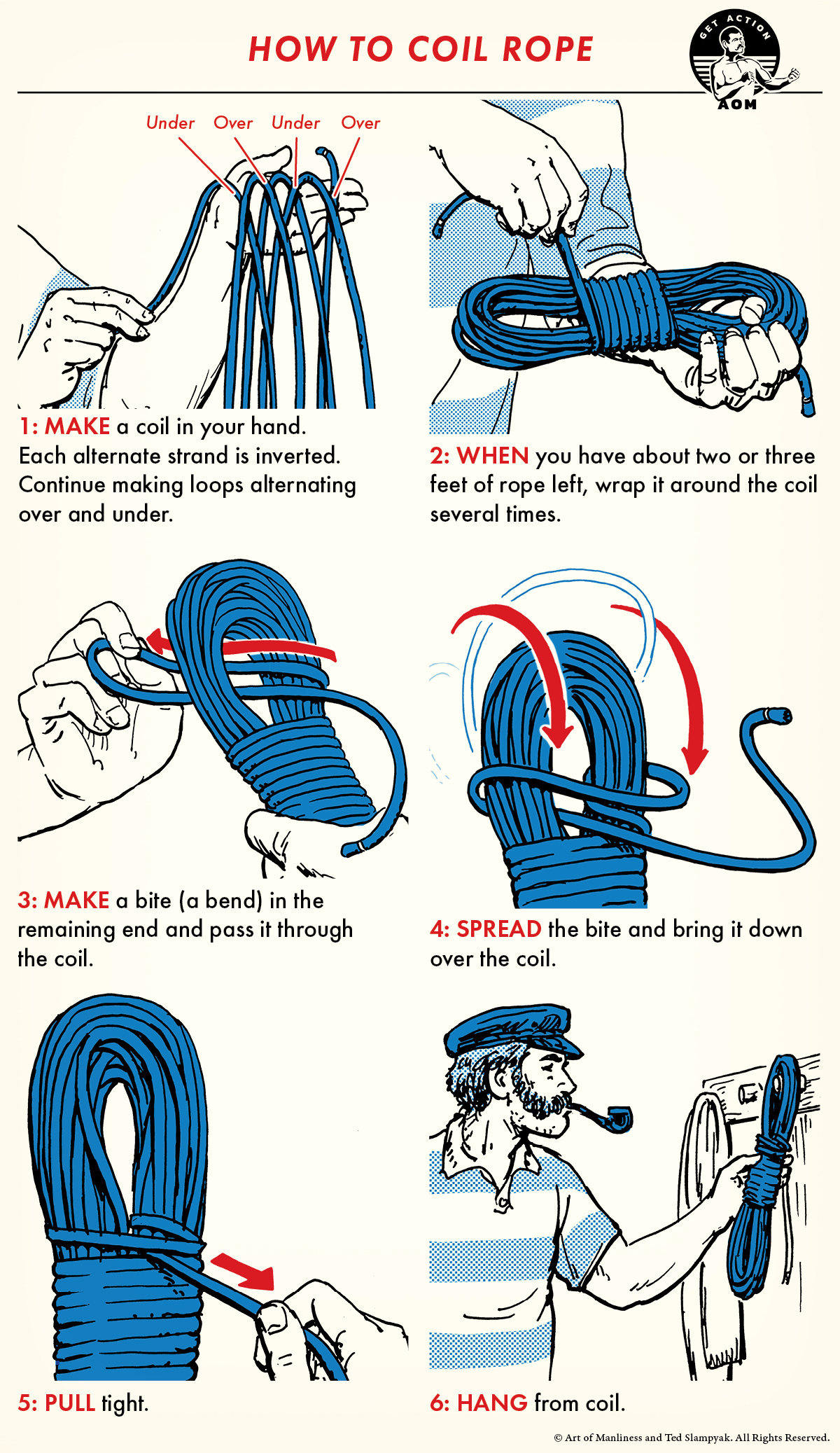
In our introduction to rope, we gave you the rundown on different rope materials and construction methods.
Today we’re going to discuss how to take care of your rope so your rope takes care of you.
Do You Really Need to Worry About Taking Care of Your Rope?
Rope is rope. It’s not a fine-tuned machine. So do you really need to worry about how to take care of it?
Well, that depends on what kind of rope you’re talking about, and what you’re using it for.
For everyday types of rope, for everyday kinds of uses, like rigging a tarp shelter, tying down equipment in your truck, or hanging your clothes out to dry, you don’t need to worry about rope maintenance much because the type of rope you’d use for this workaday stuff is usually incredibly cheap, and isn’t designed with strength in mind or used in safety-critical situations.
For this kind of garden variety rope, feel free to beat it up with gusto. (Do check its integrity if you’re using it for something like tying an item to the top of your car.) When you feel like the rope is no longer serviceable for workaday activities, just get rid of it.
With that said, you can extend the life of even everyday rope by following the basic maintenance guidelines that we’ll discuss below.
Now, if your rope is of the expensive, non-expendable variety, and used in safety-critical situations like climbing, rappelling, sailing, and rescue operations, you need to look after it and really pay attention to its maintenance.
Here’s how.
How to Take Care of Rope
Keep your rope off the ground. Keep your rope elevated so dirt, grease, chemicals, and various debris can’t touch it. This stuff can damage the material’s fibers and weaken the rope. For climbing ropes, when you’re using them outdoors, you ideally want to put them on a tarp so they’re kept off the ground.
Keeping your rope off the ground when not in use also prevents people from stepping on it, which can create damage and grind dirt into the fibers.
Store rope out of the sun and excessive heat. While most modern, high-end ropes are treated to prevent UV damage, you still want to store your rope out of the sun’s rays when not in use. Excessive heat can also weaken rope, so don’t store it in a hot shed or attic.
Clean your rope as needed. If your rope does get dirty, wash it in cold water with mild soap. Rinse with cold water to get the soap off. Hang up and let air dry. Don’t put the rope in the sun to dry or use heaters to speed the process. Make sure rope is completely dry before you coil and hang it.
Inspect rope occasionally for damage. After you use your rope, do a quick inspection for damage. According to REI, you want to look for the following defects:
- Are there extremely fuzzy areas?
- Do you see or feel cuts?
- Do you see or feel flat spots?
- Does the rope feel stiff?
- Can you see the core?
- Do you see discoloration from exposure to sun and/or chemicals?
If the answer is yes to any of these questions, you should probably retire the rope. If the fraying is on the end of the rope, it might still be salvageable if you whip it (we’ll cover how to do that in a future article).
Replace climbing rope regularly. As a climber, your rope is typically the primary thing that prevents you from falling to your death. Consequently, you want to make sure your rope is in tip-top shape. Climbing rope manufacturers have put out retirement schedules for your climbing rope so that you’re not using rope that’s potentially compromised:
- After a fall with extreme loads or other damage: immediately
- Frequent use (weekly): 1 year or sooner
- Regular use (few times per month): 1–3 years
- Occasional use (once per month): 4–5 years
- Rare use (1–2 times per year): 7 years
To track how often you use a climbing rope, it’s recommended that you label the rope with a tag on one end (e.g., “Rope A”), and then record the dates you used it in a log book.
What do you do with a retired climbing rope? Don’t throw it away. While it’s no longer good for safety-critical activities like climbing, you can still likely use it for workaday stuff on camping trips (like rigging tarps) or around the house as a clothesline.
How to Coil Your Rope for Storage
When you’re not using your rope, you again want to store it off the ground to keep it clean and out of harm’s way. Here’s how to coil your rope so that it stores neatly and uncoils easily.



